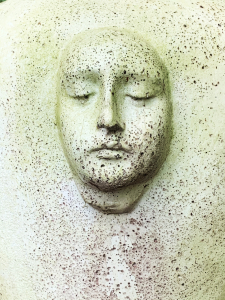“Traumatized people chronically feel unsafe inside their bodies: The past is alive in the form of gnawing interior discomfort. Their bodies are constantly bombarded by visceral warning signs, and, in an attempt to control these processes, they often become expert at ignoring their gut feelings and in numbing awareness of what is played out inside. They learn to hide from their selves.” – Bessel A. van der Kolk, The Body Keeps the Score: Brain, Mind, and Body in the Healing of Trauma
 Nobody sets out looking to experience trauma. It is a horrible and unfortunate part of life that will touch all of us. Our parents tried to shield us from trauma, just as we will try to shield our children. Yet we will all experience it multiple times in our lives. It is part of the broken world in which we live that will one day be made right by God.
Nobody sets out looking to experience trauma. It is a horrible and unfortunate part of life that will touch all of us. Our parents tried to shield us from trauma, just as we will try to shield our children. Yet we will all experience it multiple times in our lives. It is part of the broken world in which we live that will one day be made right by God.
Historically, Western culture and religions have done a poor job recognizing and managing trauma. There has been a shift in the last few years but there is still have a long way to go.
Perhaps it is because we’re uncomfortable with this deep type of pain, or because acknowledging the sorrow means that we must acknowledge the sorrow. Whatever the reason, we could all use a bit of help and education in this area.
This article serves as a starting point for this. In this article, you’ll learn a bit more about what trauma is, how we can recognize signs of trauma in ourselves and others, and ways to manage trauma at home.
Of course, working with a professional counselor is important when dealing with any sort of traumatic incident as well. These are not things that are meant to be processed and managed alone. God gave us each other to walk the journey together. We merely offer these ways to manage trauma as additional tools for you or someone you care about.
What is trauma?
 Trauma results from an incident that was extremely upsetting, disturbing, dangerous, or fearful. This could be something that happened once or that happens repeatedly over time. What one person experiences as traumatic may not necessarily be traumatic to another person. Multiple people could experience the same thing and have vastly different reactions to it. Trauma responses usually begin right away and can last for days, weeks, months, or years.
Trauma results from an incident that was extremely upsetting, disturbing, dangerous, or fearful. This could be something that happened once or that happens repeatedly over time. What one person experiences as traumatic may not necessarily be traumatic to another person. Multiple people could experience the same thing and have vastly different reactions to it. Trauma responses usually begin right away and can last for days, weeks, months, or years.
Signs of trauma
Many folks think trauma will be easy to recognize. Of course, a physical trauma will be visible, but most of our trauma is not physical. It is mental, emotional, psychological, and even spiritual. These are some of the ways the trauma may manifest in our bodies and behavior-
Physical signs and symptoms
- Headaches
- Vision problems
- Stomach aches and digestive discomfort
- Dizziness and vertigo
- Heart palpitations
- Joint pain
- Muscle pain
- Chronic pain
- Backaches
- Insomnia
- Excessive sleep
- Nightmares and disturbing dreams
Emotional signs and symptoms
- Low self-esteem
- Startling easy/ being jumpy
- Depression
- Anxiety
- OCD
- Substance abuse
- Pornography and/or sex addiction
- Overly sexualized behavior
- Brain fog
- Issues focusing
- Breaking out in tears for unknown reasons
- Intrusive thoughts
- Disassociation
- Impulsiveness
Signs common in children
- Separation anxiety/ clingy behavior
- Behavioral problems at school
- A decline in grades/ school performance
- Frequent stomach aches, illness, and other symptoms that keep them home from school
- Change in play behavior
- Reenacting traumatic incident through play
- Regression in developmental and behavioral growth
- Language delay
These signs and symptoms can also be indicative of other health and/or mental health issues. Simply because you, or someone you love, has some of these going on does not mean that trauma is the cause. These are the most common ways we see trauma manifest. If you’re concerned about symptoms you’re having, talk to your doctor or healthcare provider.
Practical Ways to Manage Trauma at Home
 Below is a list of ways to manage trauma at home. Don’t try all of these at once. Go through one at a time and keep what works for you while leaving what doesn’t. Your counselor can work with you on developing these practices and trying various aspects of them out.
Below is a list of ways to manage trauma at home. Don’t try all of these at once. Go through one at a time and keep what works for you while leaving what doesn’t. Your counselor can work with you on developing these practices and trying various aspects of them out.
Journaling is an integral part of many people’s healing journey. Some folks find they do well with what’s known as free association journaling. This is where you write what comes to mind with no filter, no concern over spelling or grammar, no worry over the logic of order, etc.
Sometimes this may end up looking like getting a to-do list out on paper or a stream of rabbit trail thoughts that seem to not be connected at all. Other times it will be focused on what you’re healing from. This type of journaling clears the mind to focus on other things and can help clear out anything you may have been repressing.
Yoga has also proven useful. There are even trauma-focused yoga classes available for those who are interested. If you’re interested, you can search for scientific studies about yoga helping to reshape and heal the brain.
Meditation practices such as Centering Prayer, Lectio Divina, and Scripture meditation are all excellent resources. These are Christian meditation practices that will help to calm your mind and body while also bringing you closer to God.
Christian meditation practices are often described by those who regularly practice as an encounter with God as both great Counselor and great Physician. Folks have reported amazing growth in faith as well as healing from trauma through Christian-based meditation.
Breathwork often goes along with mediation and yoga. It can also be practiced alone. Most people breathe from their chest instead of the belly. When our body is in a state of fear and trauma, we breathe even more in our chest. Studies have shown that intentional breathwork helps our brain and body to recognize it is safe and slows down the fight/flight response.
There are dozens of different breathwork options out there. Try some out and see which works best for you. Likely you will gravitate towards different types of breathwork at different parts of your healing journey so make sure to return to them.
Walking is free, easy, and healing. You can even walk and do meditation or walk and do breathwork. Walking can be very healing in and of itself. Our bodies crave movement and release when they are going through trauma and afterward. Half an hour a day is a good average. If you can’t devote that much time, try fifteen minutes a day.
The general recommendation is to keep up a good pace so that you can still comfortably carry on a conversation without feeling winded. This will likely be a slower pace in the beginning and increase as your body gets used to walking more.
 An advantage to walking is time in nature. God created this amazing world for us to enjoy. Researchers have found that spending time outdoors is incredibly healing and beneficial. You can sit in nature to meditate or do breathwork too. There are even nature-based yoga classes! Get outside as much as you can. If you live in the city, head to a local park. Even ten minutes a day spent in nature is helpful.
An advantage to walking is time in nature. God created this amazing world for us to enjoy. Researchers have found that spending time outdoors is incredibly healing and beneficial. You can sit in nature to meditate or do breathwork too. There are even nature-based yoga classes! Get outside as much as you can. If you live in the city, head to a local park. Even ten minutes a day spent in nature is helpful.
Note- make sure to talk with your doctor or another healthcare provider before beginning any new exercise or yoga- even walking. Folks with health issues should also check with them before beginning breathwork. While these practices are generally acceptable for most people, some people should avoid them.
Certain yoga poses may not be safe for certain health conditions, for example. Also, remember to be gracious with yourself. Your body and mind are going through a lot. These are practices, not things to master. All of these ways to manage trauma will take practice over the years.
“Sculpture”, Courtesy of Jan Canty, Unsplash.com, CC0 License; “Enjoying the Sun”, Courtesy of Alexandr Podvalny, Pexels.com, CC0 License; “Standing Rocks”, Courtesy of Colton Sturgeon, Unsplash.com, CC0 License; “Breathe”, Courtesy of Tim Goedhart, Unsplash.com, CC0 License








